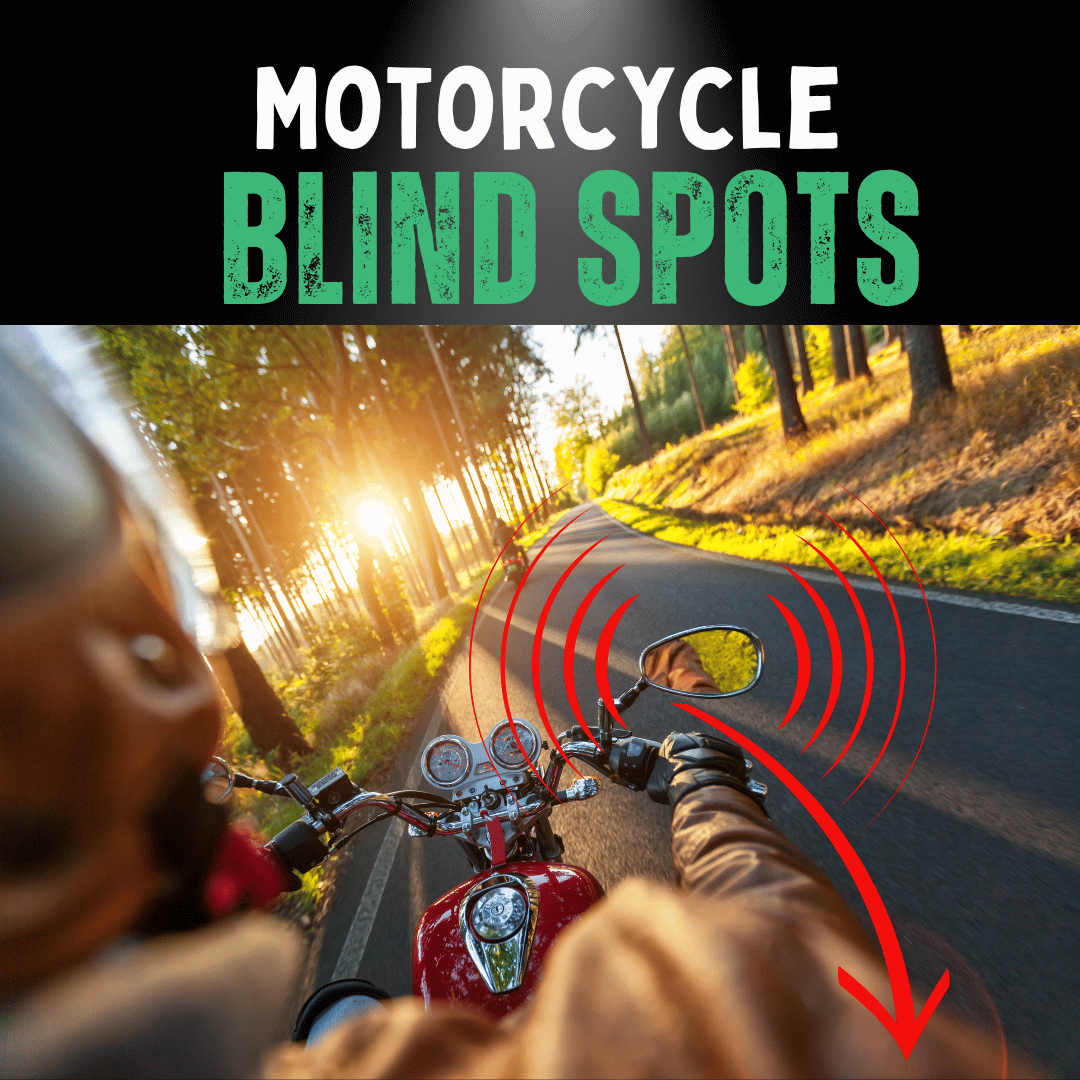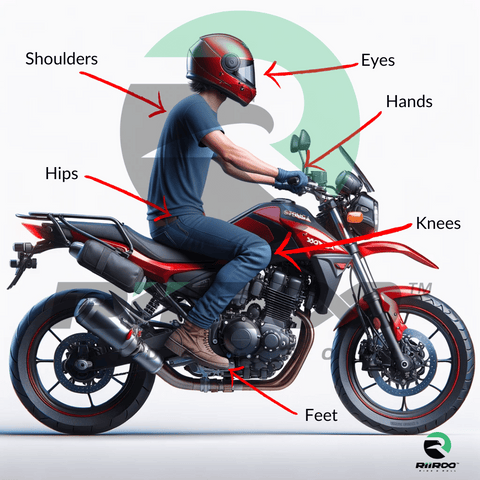
Updated: 20.05.25
Riding a motorcycle offers freedom, but it comes with risks—especially blind spots. Understanding these hidden areas can prevent accidents and ensure a safer ride.
What are motorcycle blind spots, and how can you navigate them? Let’s explore.
1. What Are Motorcycle Blind Spots?
A blind spot is an area around your motorcycle that you can’t see while looking forward or using mirrors. These typically occur on the rear-left and rear-right sides, requiring a head turn to check.
Why Blind Spots Matter
Blind spots vary by motorcycle design, rider height, and mirror type. Awareness is key to avoiding collisions. Learn more about common blind spot mistakes.
Mirror Adjustments
Properly aligned mirrors reduce blind spots but don’t eliminate them. Adjust mirrors to cover rear sides, and always perform head checks.
Tools to Minimise Blind Spots
Blind spot mirrors or advanced monitoring systems alert you to vehicles in hidden areas, acting as an extra safety layer.
Related: How to Be a Responsible Motorcycle Rider
2. Blind Spots of Other Vehicles
Motorcyclists must also navigate the blind spots of nearby vehicles. Here’s how different vehicles affect your safety.
| Vehicle Type | Blind Spots | Safety Tips |
|---|---|---|
| Passenger Cars | Rear sides | Overtake quickly to avoid lingering in blind spots. |
| SUVs | Larger rear sides | Position yourself in the driver’s mirror view. |
| Large Trucks | Sides and rear | Keep distance; if you can’t see the driver, they can’t see you. |
| Other Motorcycles | Rear sides | Use staggered formation in group rides. |
3. Checking Blind Spots
Safe riding requires proactive blind spot checks.
Mirror Checks
Glance at mirrors before lane changes or turns to assess the road behind you, but don’t rely on them alone.
Head Checks
Turn your head to check blind spots before moving. This ensures no vehicles are hidden from view.
Blind Spot Technology
Blind spot monitoring systems, now common in some motorcycles, provide alerts for vehicles in blind spots.
4. Preventing Blind Spot Accidents
Use these strategies to stay safe.
| Proactive Measure | Description | Benefit |
|---|---|---|
| High-Visibility Gear | Wear neon jackets, helmets, and reflective tape. | Improves visibility in low-light or busy conditions. |
| Safety Buffer | Keep distance from trucks and SUVs. | Gives time to react and avoids blind spots. |
| Head Checks | Turn head to check blind spots before moves. | Prevents collisions with unseen vehicles. |
| Hand Signals | Use gestures with turn signals. | Clarifies intentions to other drivers. |
Stay Visible
Wear high-visibility clothing and add reflective tape to your bike and gear for better detection.
Avoid Lingering
Don’t stay in other vehicles’ blind spots—overtake or slow down to remain in the driver’s line of sight.
Related: Motorcycle Safety: A Beginner’s Guide
5. Navigating Busy Intersections
Intersections increase blind spot risks. Slow down, check mirrors, and perform head checks to avoid surprises.
6. Weather and Blind Spots
Rain or fog reduces visibility, making blind spots more dangerous. Exercise extra caution and use high-visibility gear.
7. Blind Spot Accident Statistics
In the US, over 800,000 blind spot accidents occur annually (NHTSA). About 41% of motorcycle crashes involve drivers not seeing the rider. In 2019, large trucks contributed to 15% of motorcyclist fatalities. In the UK, motorcyclists account for 20% of road deaths. These stats highlight the need for vigilance.
8. Tips for Motorists
Drivers should double-check blind spots, avoid tailgating, and give motorcyclists space to share the road safely.
Conclusion
Mastering motorcycle blind spots is essential for safe riding. Use head checks, high-visibility gear, and technology to stay safe and enjoy the ride.
Frequently Asked Questions
How can I reduce motorcycle blind spots?
Use blind spot mirrors, adjust mirrors properly, and perform head checks before lane changes.
What’s the best way to stay visible to other drivers?
Wear high-visibility jackets, helmets, and reflective tape, especially in low-light conditions.
How do large vehicles affect my motorcycle blind spots?
Large vehicles like trucks have bigger blind spots, increasing the chance you’re unseen. Stay out of their blind zones.
What should drivers do to avoid missing motorcyclists?
Drivers should check mirrors and blind spots with head turns before lane changes and give motorcyclists space.
How can I stay safe at busy intersections?
Slow down, check mirrors, and perform head checks to ensure no vehicles are in your blind spots.
Additional Reading
Common Motorcycle Blind Spot Mistakes
Motorcycle Safety: A Beginner’s Guide
Get in Touch 🚀
Enjoyed our guide on motorcycle blind spots? Explore more at RiiRoo.com!
Have questions about kids’ ride-on toys? Try our live chat or check out our motorbikes.







Share:
How to Shift Gears on a Motorcycle (THE RIGHT WAY)
How to Protect a Motorcycle From Theft (Guard Your Ride)